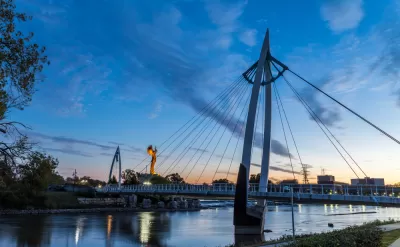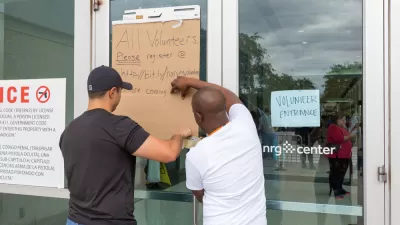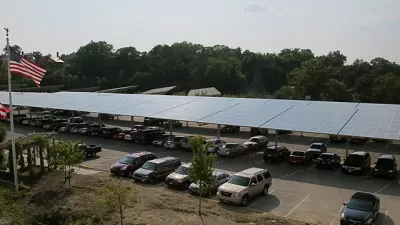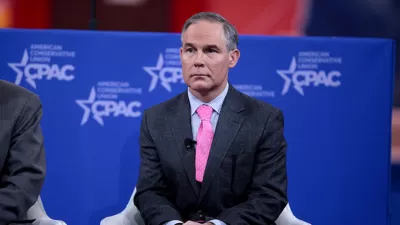FiveThirtyEight explores how planners in the Midwest are trying to get ahead of an intensifying climate.

Across the Midwest, weather patterns are changing fast. Storms are starting earlier and hitting harder, and floods are coming faster and with less warning. And what used to be considered unusually intense rainfall—a "mega-rain" event—is quickly threatening to become the new normal. FiveThirtyEight's Ella Koeze delves into the fundamental challenges this shift poses to existing infrastructure, emergency management, and city planning efforts throughout the Midwestern states.
For one, the need to invest in more robust and durable infrastructure is becoming increasingly clear: "While the design standard has been to build roads, buildings and other infrastructure in a way that can withstand a hundred-year storm, some engineers are considering whether it's time to build for a 500-year storm, with the expectation that soon it might no longer be such a remote possibility," Koeze writes.
But before cities can start planning how to overhaul their major infrastructure, they need data they've never had before. "The precipitation estimates that city planners have relied on in making preparations for flooding are based on historical weather trends, not predictions of future trends," Koeze explains. "The estimates do not take into account how climate change might influence precipitation in the future." Until new prediction models are developed, planners are doing what they can—focusing on bolstering emergency systems.
More information and helpful infographics are on FiveThirtyEight.com.
FULL STORY: The Midwest Is Getting Drenched, And It’s Causing Big Problems

Alabama: Trump Terminates Settlements for Black Communities Harmed By Raw Sewage
Trump deemed the landmark civil rights agreement “illegal DEI and environmental justice policy.”

Study: Maui’s Plan to Convert Vacation Rentals to Long-Term Housing Could Cause Nearly $1 Billion Economic Loss
The plan would reduce visitor accommodation by 25% resulting in 1,900 jobs lost.

Why Should We Subsidize Public Transportation?
Many public transit agencies face financial stress due to rising costs, declining fare revenue, and declining subsidies. Transit advocates must provide a strong business case for increasing public transit funding.

Wind Energy on the Rise Despite Federal Policy Reversal
The Trump administration is revoking federal support for renewable energy, but demand for new projects continues unabated.

Passengers Flock to Caltrain After Electrification
The new electric trains are running faster and more reliably, leading to strong ridership growth on the Bay Area rail system.

Texas Churches Rally Behind ‘Yes in God’s Back Yard’ Legislation
Religious leaders want the state to reduce zoning regulations to streamline leasing church-owned land to housing developers.
Urban Design for Planners 1: Software Tools
This six-course series explores essential urban design concepts using open source software and equips planners with the tools they need to participate fully in the urban design process.
Planning for Universal Design
Learn the tools for implementing Universal Design in planning regulations.
Caltrans
Smith Gee Studio
Institute for Housing and Urban Development Studies (IHS)
City of Grandview
Harvard GSD Executive Education
Toledo-Lucas County Plan Commissions
Salt Lake City
NYU Wagner Graduate School of Public Service





























